Power Pitch
Imaging Neurofluids: From CSF to Lymphatics
ISMRM & ISMRT Annual Meeting & Exhibition • 10-15 May 2025 • Honolulu, Hawai'i

| 08:15 |
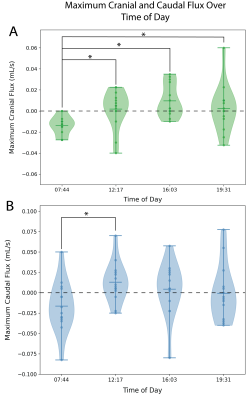 |
Screen Number: 1
0449. Diurnal
regulation of cerebrospinal fluid flow dynamics assessed using
cardiac-corrected phase-contrast magnetic resonance imaging
M. Leguizamon, K. Hett, M. Curtin, A. DuBois, A. Song, C.
Han, M. Garza, P. Trujillo, C. McKnight, C. Considine, M.
Donahue
Vanderbilt University Medical Center, Nashville, United States
Impact:
This works provides new evidence in humans that CSF flow dynamics at the level of the cerebral aqueduct become more dynamic over the circadian rhythm of wakefulness, with a directionality similar to that observed with increasing age and neurodegeneration. |
| 08:17 |
 |
Screen Number: 2
0450. Neurofluid
fluctuation analysis using dynamical network biomarker (DNB) MRI
in idiopathic normal pressure hydrocephalus
M. Sakai, T. Miyati, N. Ohno, S. Saito, H. Kasai, M. Mase
Kanazawa University, Kanazawa, Japan
Impact:
We establish the basis of DNB-MRI and its clinical application to iNPH. The dMRI-DNB index enables to assess fluctuation of the water molecule in the brain. |
| 08:19 |
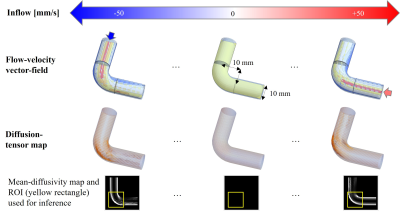 |
Screen Number: 3
0451. Formulation
and Simulation of Low b-value DTI of Pseudorandom Flow in CSF
Y. Bito, H. Kameda, N. Fujima, N. Kinota, D. Kato, T. Fujii,
H. Ochi, K. Ishizaka, K. Hirata, K. Kudo
Hokkaido University, Sapporo, Japan
Impact: Formulation of low-b DT map in relation to
flow-velocity vector-field was derived, and simulation using
the formula and computational fluid dynamics revealed
remarkable features of pseudorandom flows, suggesting that
it could help in understanding pseudorandom flow measured
with low-b DTI.
|
| 08:21 |
 |
Screen Number: 4
0452. Multi-delay
2D interslice saturation MRI for non-invasive flow mapping of
CSF in optic nerve subarachnoid space
M. Kim, J-G Im, S. Baete, S-H Park
Korea Advanced Institute of Science and Technology, Daejeon, Korea, Republic of
Impact: This study introduces a non-invasive MRI
technique to measure CSF flow in the ONSAS for the first
time, offering potential for early NTG diagnosis. Its
compatibility with clinical settings could make it a safer,
more accessible alternative to invasive methods.
|
| 08:23 |
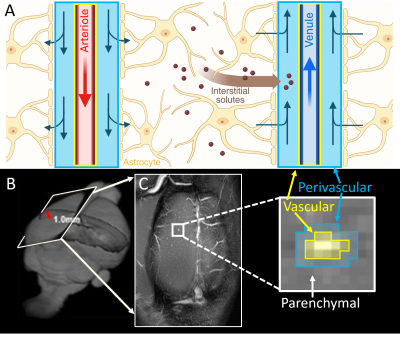 |
Screen Number: 5
0453. Diffusion-weighted
2D cortical slice mapping to spatially resolve distinct
neurofluid flow regimes

R. Carlson, J-P Galons, C. Howison, N. Williamson, M.
Komlosh, A. Avram, P. Basser, E. Hutchinson
University of Arizona, Tucson, United States
Impact: The measurement of spatially resolved flow
regimes using the novel technique of 2D cortical slice
diffusion-weighted MRI has the potential to improve clinical
assessments of CSF neurofluid dynamics in the
glymphatic-lymphatic system.
|
| 08:25 |
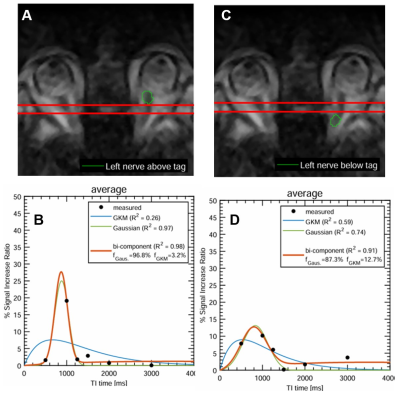 |
Screen Number: 6
0454. Neurofluid
dynamics along the optic nerve: Application of 3D interleaved
stack-of-stars (iSoS) with Time-SLIP Spin Labeling
H. N. Jung, V. Malis, M. McDonald, M. Miyazaki
Korea Univeristy Guro Hospital, Seoul, Korea, Republic of
Impact: Proof of neurofluid dynamics along the optic
nerve provides new insights into understanding the
pathophysiology and treatment of neuro-ophthalmic disease,
particularly those related to the glymphatic system.
|
| 08:27 |
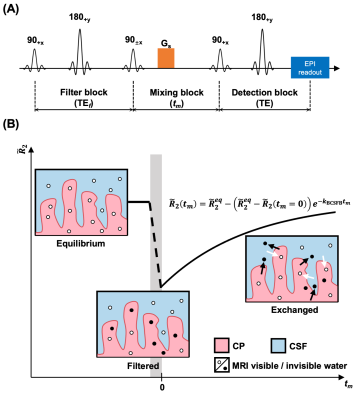 |
Screen Number: 7
0455. The
water exchange across the blood-CSF barrier in human choroid
plexus detected by relaxation-exchange MRI (REXI)
X. Wu, S. Tan, Y. Zhang, B. Jiao, F. Jiang, Y. Han, Y-C Hsu,
R. Xue, R. Bai
State Key Laboratory of Brain and Cognitive Science, Beijing MRI Center for Brain Research, Institute of Biophysics, Chinese Academy of Sciences, Beijing, China
Impact: Considering the growing importance of
neurofluids and CP, REXI provides with a new and
contrast-agent-free technique to measure the water exchange
across BCSFB and serves as a promising neuroimaging tool for
evaluating CP function in future clinical studies.
|
| 08:29 |
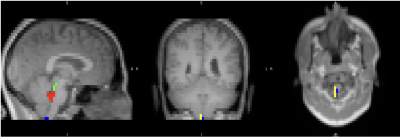 |
Screen Number: 8
0456. Modulating
cerebrospinal fluid dynamics using pulsed photobiomodulation:
the dose and skin-colour dependence
A. Motsenyat, X. Zhong, H. Lankveld, J. Chen, J. Chen
Baycrest, Toronto, Canada
Impact: Photobiomodulation (PBM) has shown to enhance
glymphatic drainage by modulating CSF flow, but in a
delivery and dose-dependent manner. The significant
wavelength-frequency interactions and melanin effects
demonstrate the need to optimize PBM delivery in different
settings.
|
| 08:31 |
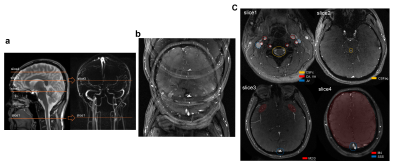 |
Screen Number: 9
0457. Simultaneous
assessment of cerebral arterial, venous, and CSF flow dynamics
using multiband dual-VENC phase-contrast MRI
J. Tang, Z. Li, T. Zhao, S. Chung, L. Yan
Northwestern University, Chicago, United States
Impact: MD-DV PC-MRI enables simultaneously assessing
CSF, arterial, and venous dynamics at multiple segments in
the brain within a short scan time, which could be a
potentially useful MRI technique to study blood-neurofluid
coupling in both cerebrovascular and neurodegenerative
diseases.
|
| 08:33 |
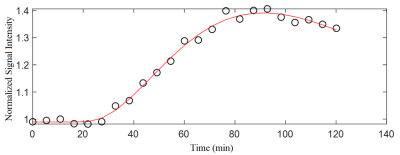 |
Screen Number: 10
0458. Assessing
Glymphatic Flow Modulation by Vasopressin and Relcovaptan Using
Glymph-FIT: a Novel Approach with DCE-MRI
M. Zhang, E. Hamed, S. Majumdar, J. Mitchell, M. Gillette,
B. Sutton
University of Illinois at Urbana-Champaign, Urbana, United States
Impact: This study introduces Glymph-FIT, a novel tool
for accurately measuring very slow glymphatic flow dynamics.
Findings suggest V1A antagonism with relcovaptan enhances
glymphatic flow, potentially offering new therapeutic
strategies to improve brain waste clearance and potentially
mitigate neurodegenerative disease progression.
|
| 08:35 |
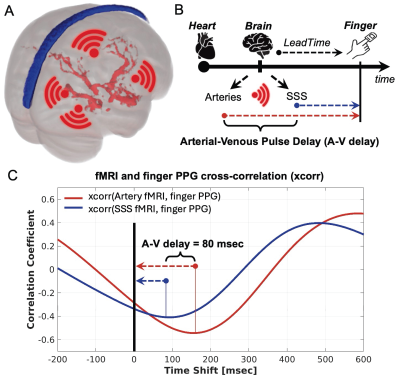 |
Screen Number: 11
0459. Age-related
and sex-specific reduction in cerebral arterial-venous cardiac
pulse delay in functional magnetic resonance imaging

A. Wright, T. Xu, J. Koo, Y. Zhao, Y. Tong, Q. Wen
Indiana University School of Medicine, Indianapolis, United States
Impact: This work introduces a novel fMRI-based measure
of cerebral arterial-venous pulse delay, providing an
alternative tool sensitive to changes in vascular
compliance. With the widespread accessibility of fMRI, this
approach has applications for researching biomechanical
changes in neurological conditions.
|
| 08:37 |
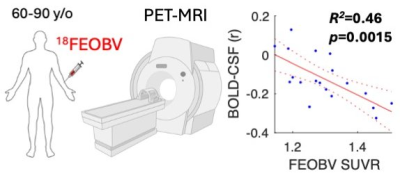 |
Screen Number: 12
0460. Cholinergic
basal forebrain deficit impairs BOLD-CSF coupling and glymphatic
flux
K-H Chuang, Y. Xia, X. Zhou, Z. Li, L. Qian, E. Eeles, G.
Ngiam, J. Fripp, E. Coulson
University of Queensland, Brisbane, Australia
Impact: As cholinergic neurodegeneration is an early
feature of Alzheimer's disease, the cholinergic pathway
could be a new diagnostic and treatment target for improving
glymphatic function in aging and dementia.
|
| 08:39 |
 |
Screen Number: 13
0461. Glymphatic
Dysfunction Correlate with Spatial Navigation Deficits in
Subjective Cognitive Decline: Insights from 5.0T MRI
f. chen, L. zou, X. Fan, G. Cheng, Y. Li, B. Zhang
The Affiliated Drum Tower Hospital of Nanjing University Medical School, Nanjing, China
Impact: Our study is the first successful attempt in
DTI-ALPS on 5T MRI datasets. The study found impaired
glymphatic function in SCD may underlie early spatial
navigation deficits, indicating a preclinical stage of AD.
|
| 08:41 |
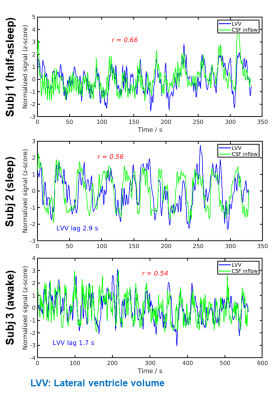 |
Screen Number: 14
0462. Coupling
between CSF inflow and ventricle volume change
H. Cheng, D. Kennedy
Indiana University, Bloomington, United States
Impact: This discovery not only provides an alternative
method for characterizing CSF dynamics but also offers new
insights into the origin of the global BOLD signal change
and the complex and dynamic properties of components of the
glymphatic system.
|
| 08:43 |
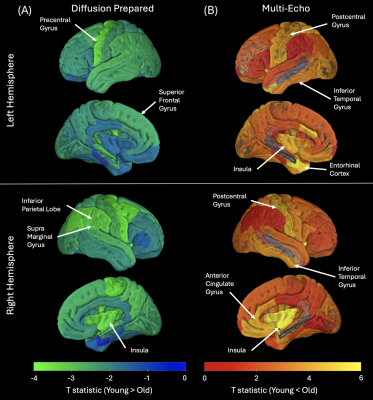 |
Screen Number: 15
0463. Comparison
of Water Exchange Rate in Young and Elderly Adults with
Diffusion Prepared and Multi-Echo Arterial Spin Labeling MRI

Y. Zhu, A. Bhattarai, B. Albuhwailah, X. Shao, J. Petr,
K. Eickel, M. Günther, D. Wang, A. Fan
University of California, Davis, Davis, United States
Impact: Our study provides novel biological information
about water exchange rate (Kw) in different brain regions to
understand aging-related changes in blood-brain barrier
physiology and advances the understanding of how Kw imaging
measures differ between arterial spin labeling methods.
|
| 08:45 |
 |
Screen Number: 16
0464. Assessing
Glymphatic Dynamics in the Human Brain Using Cardiac-Gated
diffusion MRI at Ultra-High Field
I. Aslam, T. Pavan, A. Spencer, R. Martuzzi, F. Ribaldi, G.
Frisoni, I. Jelescu
Lausanne University Hospital (CHUV) and University of Lausanne (UNIL) Lausanne, Lausanne , Switzerland
Impact: This study shows how glymphatic flow
quantification using diffusion MRI in the human brain is
influenced by the cardiac cycle, echo time and b-value,
paving the way for the non-invasive assessment of glymphatic
flow in clinical practice.
|
| 08:47 |
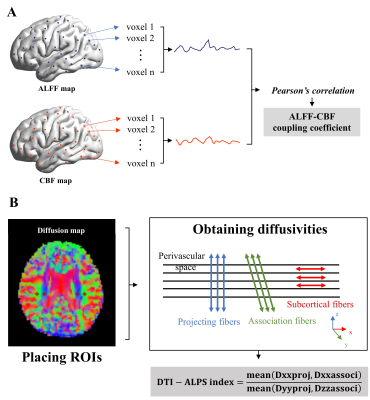 |
Screen Number: 17
0465. Neurovascular
decoupling is associated with glymphatic system dysfunction in
patients on dialysis
W. Yang, L. Song, M. Li, X. Bai, B. Xu, H. Wang, Z. Wang
Department of Radiology, Beijing Friendship Hospital, Capital Medical University , Beijing, China
Impact: This research highlights critical interactions
between neurovascular coupling and glymphatic system
function, providing insights that could inform therapeutic
strategies for cognitive impairment in dialysis patients.
|
| 08:49 |
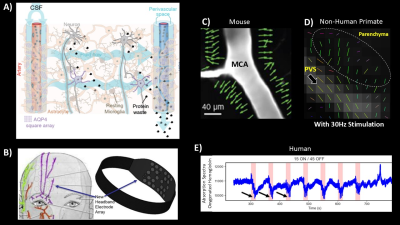 |
Screen Number: 18
0466. First
in human evaluation of non-invasive cranial nerve stimulation:
DTI measures change in arterial perivascular space and nearby
parenchyma
R. Moskwa, K. Cheng, W. Block, C. Minar, J. Williams, K.
Ludwig
University of Wisconsin-Madison, Madison, United States
Impact: Using DTI, external neuromodulation designed to
induce changes in cerebrovascular pulsations in humans was
shown to cause changes in perivascular spaces near brain
arteries and nearby parenchyma, suggesting possibility for
neuromodulation devices to serve therapeutic purpose for
augmenting glymphatic clearance.
|
| 08:51 |
 |
Screen Number: 19
0467. Investigation
of Glymphatic Biomarkers and Structural Gray Matter Integrity in
Cognitive Impairment Using DTI Metrics, DTI-ALPS, and gBOLD-CSF
H. Lee, J-H Kim, Y. Lee, S. Park, K. Yuk, S. H. Choi
Seoul National University Graduate School, Seoul, Korea, Republic of
Impact: These findings highlight the link between
glymphatic dysfunction, CSF circulation, and
neurodegeneration, offering clinicians and scientists
potential biomarkers for early detection. This study paves
the way for further research into therapeutic strategies
targeting brain clearance systems to mitigate cognitive
decline.
|
| 08:53 |
 |
Screen Number: 20
0468. Synthesis
of CSF fraction map using deep neural networks and exploration
of its potential application in assessing glymphatic dysfunction
G. Lee, S-H Oh
Hankuk University of Foreign Studies, Yongin, Korea, Republic of
Impact: Our
method reduces the requirements to acquire additional
multi-echo spin-echo T2w
images for CSFF analysis. This may enhance the utility of
CSFF analysis for assessing the dysfunction in the
glymphatic system.
|
| 08:55 |
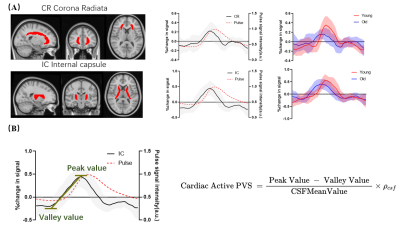 |
Screen Number: 21
0469. Cardiac
active PVS: a metric derived from dynamic T2-weighted EPI for
brain effective perivascular space characterization
F. Jiang, T. Hua, Q. He, Z. Wang, S. Tan, L. Chai, Y-c Hsu,
X. Zhang, Y. Liu*, R. Bai*
College of Biomedical Engineering and Instrument Science, Zhejiang University, Hangzhou, China
Impact: Our proposed method provides with a new way to
characterize these MRI-invisible but cardiac-active PVS
density, which is a highly promising biomarker to evaluate
the glymphatic system in future.
|
| 08:57 |
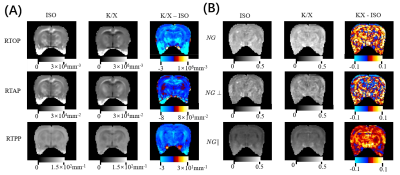 |
Screen Number: 22
0470. The
feasibility of mean apparent propagator (MAP)-MRI for Assessing
the Glymphatic function

Q. He, Z. Li, J. Liu, Y. Han, E. Özarslan*, R. Bai*
School of Brain Science and Brain Medicine, Zhejiang University, Hangzhou, China
Impact: Given the significant role of the glymphatic
system in maintaining brain homeostasis, our findings
suggest MAP-MRI’s sensitivity to glymphatic function, which
makes it a potentially viable method for monitoring
glymphatic activity.
|
| 08:59 |
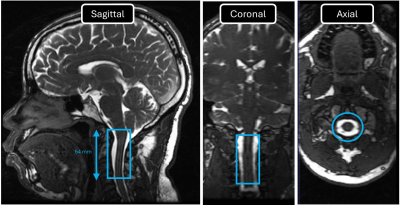 |
Screen Number: 23
0471. Assessment
of Cerebrospinal Fluid Dynamics During Normal Breathing and
Valsalva Maneuver using Real-Time MRI
M. Karamzadeh, M. M. Al Samman, R. Bhadelia, Y. Zhao, J.
Oshinski, F. Loth
Northeastern University, Boston, United States
Impact: Reduction in CSF flow during Valsalva, followed
by rapid recovery, may explain the quick resolution of
Valsalva headaches in Chiari Malformation. However, the
cause remains unclear, as no differences in CSF flow changes
were observed between Chiari and healthy groups.
|
| 09:01 |
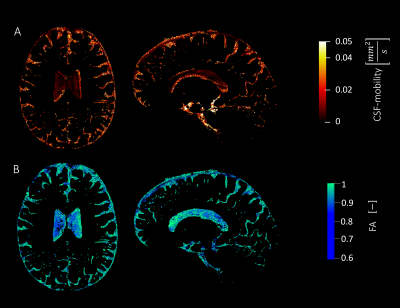 |
Screen Number: 24
0472. High-resolution
in-vivo imaging of glymphatic markers in frontotemporal lobar
degeneration using CSF-STREAM at 7 Tesla
M. Debiasi, F. Prinse, C. Najac, M. J. van Osch, J. van
Swieten, L. van der Weerd, E. Dopper, L. Hirschler
C.J. Gorter MRI Center, Radiology, Leiden University Medical Center, Leiden, Netherlands
Impact: The use of CSF-STREAM to study impaired brain
clearance may benefit the understanding of FTLD, in
particular by studying PVS properties in different stages
and subtypes of the disease.
|
| 09:03 |
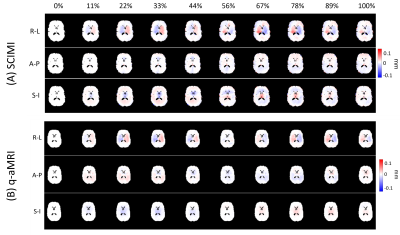 |
Screen Number: 25
0473. Assessment
of Slow Flow in the Brain using SCIMI and q-aMRI on a
High-Performance Gradient System: Comparison of Phase and
Magnitude-based Methods
A. Ajala, I. Terem, I. Heukensfeldt Jansen, N. Abad, C.
Bhushan, T. Foo, J. K. DeMarco, R. Shih, G. Kohls, H. D.
Morris, A. Pollatou, H. Yalewayker, M. Hood, S. Skeete, E.
Metzger, V. Ho, S. Holdsworth, J. K. Warner, K. Setsompop,
L. Marinelli
GE HealthCare, Niskayuna, United States
Impact: This study independently compared the measured
displacement fields due to brain parenchymal fluid flow
obtained from the SCIMI and q-aMRI methods and the
correlation of both estimations, thereby validating both
methods and providing deeper insights for applications in
neurodegenerative pathologies.
|
The International Society for Magnetic Resonance in Medicine is accredited by the Accreditation Council for Continuing Medical Education to provide continuing medical education for physicians.